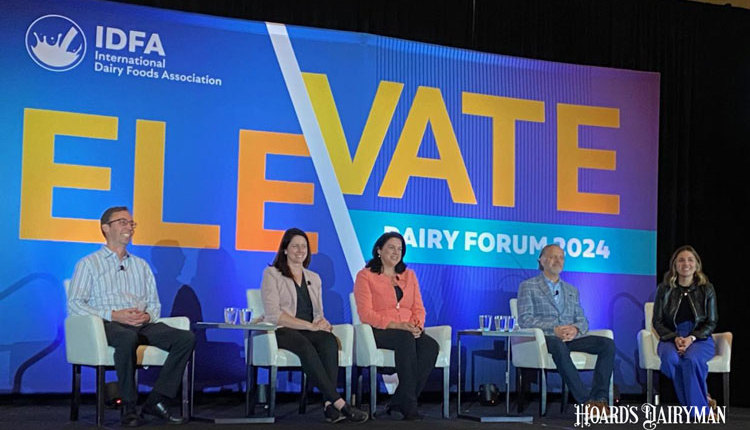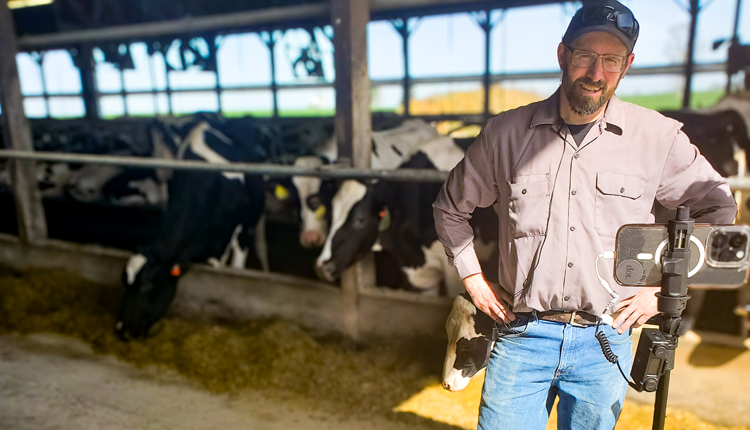If you read our most recent issue, you would've noticed an article by Frank Mitloehner from the University of California- Davis who is taking the time to set the record straight on the dairy industry's greenhouse gas emissions. At one point, the facts were misconstrued by those at the Food and Agriculture Organization (FAO). We're fortunate to have people like Mitloenher who have the scientific expertise to know when the science is right, and when it is wrong. Mitloehner is quick to credit the FAO, though, for recognizing and adjusting the flaws in their calculations.
He's not the only one leading the charge to confront our industry's impact to the air we breathe. The National Air Emissions Monitoring Study (NAEMS) was formed in 2005 to collect hard data on the actual emissions of animal feeding operations (AFOs) such as dairy, swine, and poultry operations. The study was part of an agreement with the EPA and was led by Purdue University. It was funded by stakeholders in animal agriculture industries such as our very own National Milk Producers Federation.
According to the EPA, NAEMS began as part of a 2005 voluntary air compliance agreement. Twenty-six sites at AFOs in nine states were monitored, with EPA oversight, over two years for particulate matter, ammonia, hydrogen sulfide and volatile organic compounds, some of the pollutants more commonly emitted from AFOs. Unlike the research that Mitloehner has done, Greenhouse gas emissions were not measured as part of this study.
Just last week, the EPA released the first set of data from the NAEMS research that took over 5 years to collect and compile. On the map below you will find descriptions where each of the testing farms were located - something that was not previously known.

We all would love for the research to speak for itself and say that we're not a major contributor to any air quality issues. However, our guess is that this data will serve primarily as baseline data. No longer will complicated formulas guess what we're actually emitting.
We're in contact with some of the NAEMS researchers and look forward to sharing their take-away messages in an upcoming issue of Hoard's Dairyman. But, if you're anxious to read the 300-page report on each of the participating dairy sites, along with the data, visit this site by clicking here.
He's not the only one leading the charge to confront our industry's impact to the air we breathe. The National Air Emissions Monitoring Study (NAEMS) was formed in 2005 to collect hard data on the actual emissions of animal feeding operations (AFOs) such as dairy, swine, and poultry operations. The study was part of an agreement with the EPA and was led by Purdue University. It was funded by stakeholders in animal agriculture industries such as our very own National Milk Producers Federation.
According to the EPA, NAEMS began as part of a 2005 voluntary air compliance agreement. Twenty-six sites at AFOs in nine states were monitored, with EPA oversight, over two years for particulate matter, ammonia, hydrogen sulfide and volatile organic compounds, some of the pollutants more commonly emitted from AFOs. Unlike the research that Mitloehner has done, Greenhouse gas emissions were not measured as part of this study.
Just last week, the EPA released the first set of data from the NAEMS research that took over 5 years to collect and compile. On the map below you will find descriptions where each of the testing farms were located - something that was not previously known.

We all would love for the research to speak for itself and say that we're not a major contributor to any air quality issues. However, our guess is that this data will serve primarily as baseline data. No longer will complicated formulas guess what we're actually emitting.
We're in contact with some of the NAEMS researchers and look forward to sharing their take-away messages in an upcoming issue of Hoard's Dairyman. But, if you're anxious to read the 300-page report on each of the participating dairy sites, along with the data, visit this site by clicking here.











